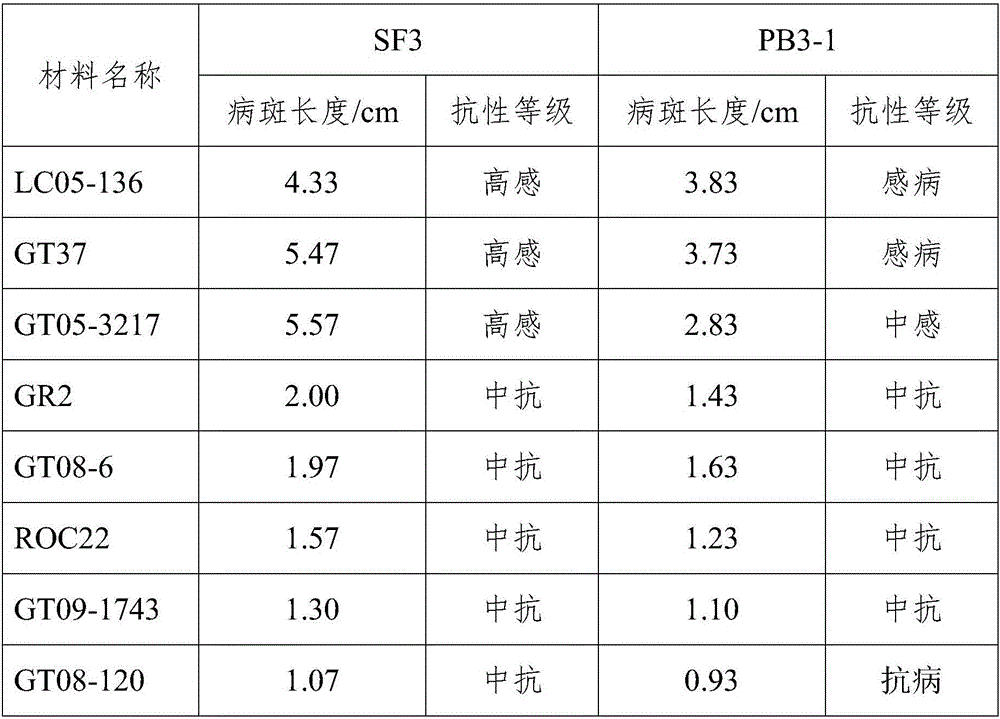Method for authenticating sugarcane Pokkah Boeng resistance with in-vitro leaves
A technology of sugarcane tip rot and detached leaves, which is applied in the field of identification of sugarcane tip rot resistance, can solve the problems of difficult temperature and humidity control in greenhouses, sugarcane leaf disease, and discrimination errors in resistance levels, and achieve easy control of measurement conditions, Guaranteed effect of infection and easy operation
- Summary
- Abstract
- Description
- Claims
- Application Information
AI Technical Summary
Problems solved by technology
Method used
Image
Examples
Embodiment
[0033] A method for identifying sugarcane tip rot resistance by adopting detached leaves, comprising the following steps:
[0034] 1. Preparation of inoculum
[0035] Two Fusarium strains of sugarcane tip rot with strong pathogenicity were used to culture separately. Specifically: inoculate the pathogenic bacteria of sugarcane tip rot on a PDA medium plate to activate for 3 days, pick the edge mycelium and inoculate it on a new PDA medium plate, cultivate it at 25-28°C for 3-5 days, and use 1 mL of sterilized Dig the mycelium block (about 5-6mm in diameter) with the tip of the pipette (one end with a wide mouth), and set it aside.
[0036] 2. Treatment of inoculated materials
[0037] Select the sugarcane tip rot susceptible varieties GT37 and LC05-136, the disease-resistant variety ROC22 and 5 regional test lines (G505-3217, GR2, GT08-6, GT09-1743 and GT08-120) in production, and collect fresh Sugarcane leaves (the 2nd to 4th fully expanded leaves counting from the heart l...
PUM
| Property | Measurement | Unit |
|---|---|---|
| length | aaaaa | aaaaa |
| diameter | aaaaa | aaaaa |
| diameter | aaaaa | aaaaa |
Abstract
Description
Claims
Application Information
 Login to View More
Login to View More - R&D
- Intellectual Property
- Life Sciences
- Materials
- Tech Scout
- Unparalleled Data Quality
- Higher Quality Content
- 60% Fewer Hallucinations
Browse by: Latest US Patents, China's latest patents, Technical Efficacy Thesaurus, Application Domain, Technology Topic, Popular Technical Reports.
© 2025 PatSnap. All rights reserved.Legal|Privacy policy|Modern Slavery Act Transparency Statement|Sitemap|About US| Contact US: help@patsnap.com

